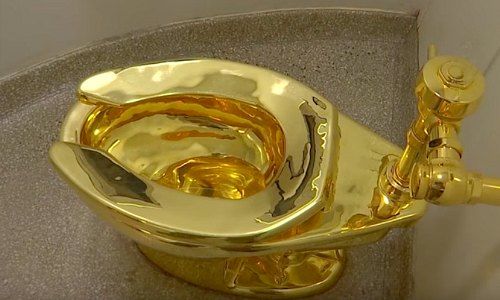The ultra-wealthy look to be battening down the hatches. From gold Christmas tree baubles to handy gemstones, the rich are finding inventive ways to escape market turmoil – as well as rising fees to keep cash at the ready.
It’s no fun having a Swiss wealth account these days, «Bloomberg» noted wryly this week. Why? The wealthy are finding no joy in financial markets: stock-picking requires strong nerves, traditional bond markets offer little to no yield and many investors don’t have the stomach for the contortions in emerging ones like Argentina and Turkey.
They are also reportedly buckling up for more market ructions by piling into cash levels last seen in 2012. The wealthy's cash piles represent a huge problem for private banks: they in turn get charged an increasingly high rate to park funds by the central bank.
Wealth Carrot-Stick
Wealth managers like UBS are trying to coax the rich out of their current hoarding mentality – which reflects the hope of at least not losing money. «In this environment, we generally recommend investing in quality and high yield investments in order to escape the ongoing negative interest rate environment,» Daniel Kalt, an economist with Switzerland’s largest bank, wrote in an investor note on Tuesday.
The only problem is that the rich aren't behaving, or doing what their wealth managers want. Kalt’s carrot is accompanied by a heavier stick by UBS: the Swiss bank and others have started charging fees on cash piles of 500,000 euros ($560,000). Inflation is eating into your cash anyway – even more so for the rich, according to Coutts.
The 327-year-old British private bank calculates inflation on the rich at 2.9 percent, based on measuring roughly 150 goods and services across 12 categories like housing, school fees, food, and alcohol. This outpaces the 2 percent rise in consumer prices in Britain.
Gold to Surge
What’s a rich person to do when the typical «flight» asset – Swiss francs – doesn’t work anymore? There’s always gold, where Bank of America Merrill Lynch predicts a surge to $2,000 an ounce, from the precious metal’s current six-year high.
The interest in alternatives to stocks and bonds has made way for a wider range of assets including private deals. But classic luxury purchases including fine art, collectible cars, vintage wine, and gemstones have also experienced a fillip.
Data bears this out: a luxury investment index compiled by Knight Frank climbed 9 percent last year, driven by surges in prices for rare spirits (a record for a bottle of Macallan helped), coins, wine, and fine art.
- Page 1 of 2
- Next >>































